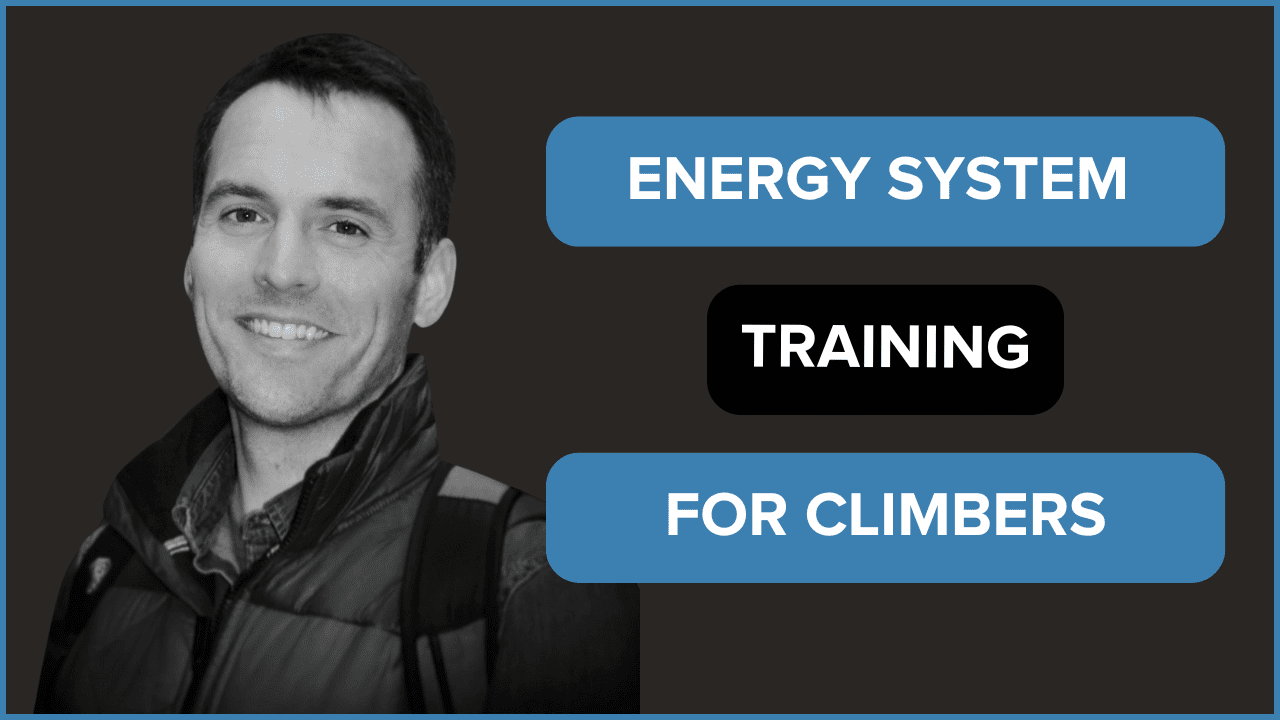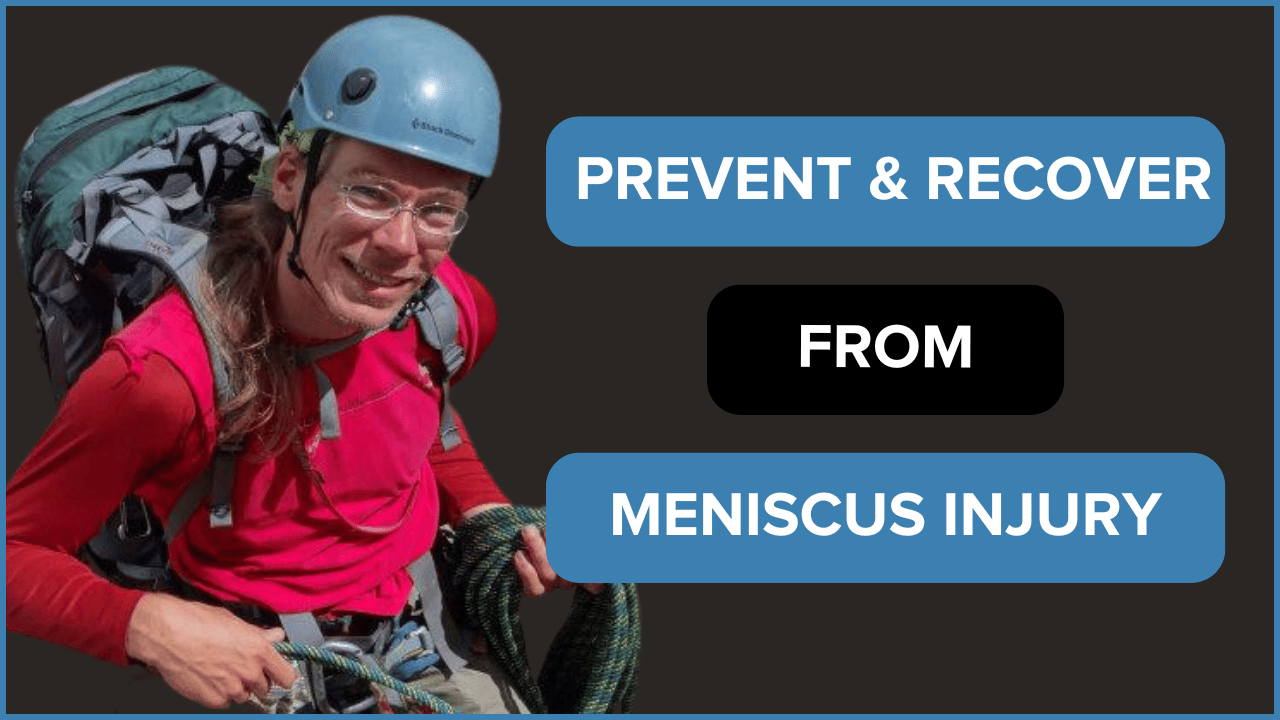S1, E3: Train For Climbing Smarter Not Harder – Steve Bechtel
In this episode The Climbing Doctor interviews Steve Bechtel on all topics related to climbing and injuries. They go deep on training mistakes that are common with climbers, training exercises, power exercises for climbing performance, climbing assessments, inside elbow pain, and how to warm-up the hands and fingers for climbing.
Steve is the founder of Climb Strong. A climber for more than 30 years, Steve has established over 300 new routes across the globe, from grade VI big wall free climbs to 25-foot sport routes on his home crags near Lander, Wyoming. An exercise science graduate of the University of Wyoming, Steve has been studying and experimenting with climbing training methods since his teens. After spending a few years as a full-time climber, Steve opened Elemental Performance + Fitness in 2002. Elemental is a full-service gym in Lander, but was built around the training needs of high-level climbers.
Watch this video to learn about Steve’s journey with injuries and how trains athletes to stay resilient for climbing.
Listen on Apple Podcasts, Spotify, or wherever you listen to podcasts!
Timecodes
- 0:00 Start
- 3:17 Mistakes and errors that climbers make with training
- 6:55 What are your biases of types of exercises that climbers should use to train
- 9:13 How important is lower body power for climbing
- 11:37 Assessments typically performed on climbers
- 16:13 A discussion about Steve’s medial epicondylitis
- 24:00 Some great analogies on analysis paralysis and overtraining
- 26:16 Warming up the hands and fingers
- 35:08 Go-to exercises for climber’s
If you would like to listen to the entire interview with Steve Bechtel, check out the podcast. If you want to watch the interview, click the YouTube link or any of the timestamps above. If you would like to read quick sample of the interview, check out the excerpt from the interview below.
I’m here with Steve Bechtel. Steve, can you introduce yourself to everybody?
Hey, yeah, Jared. Thanks for having me. I really appreciate talking to you. I always value our conversations. My name is Steve Bechtel. I’m a climbing coach and a gym owner, and I work with a climbing coaching company, Climb Strong where I work alongside 10 other climbing coaches trying to help people improve at the sport. I also take time to learn a lot, try to try to read a lot, and then try to write a lot and assimilate training information into complex ideas and making them into simple plans that people can then then use to help that move their climbing forward. And so that’s the main focus of my work these days.
And you have a ton of resources: books and online content, that climbers can use?
I was really psyched other day. I was talking to somebody where we’re assembling a book of articles that I’ve written over the years. And there was something like 180 articles that we were trying to filter down to like 12 of them. And so I was like, oh wow. We really do have a lot of content. And really, I try to keep refining and honing the material. If we can improve the content over time after we have learned more, it’s kind of our job to come out with a second edition or write another article. So it’s a fun job to have.
Are there any specific errors that you notice, you know, with climbers, with training just in general that may potentially like predispose them to, to getting injuries?
The number one thing we see is a climbers are too quick to go to specific high intensity training means. They don’t emphasize the basics of fundamental strength. You know, mobility and muscle balance. Over specialization is a problem in any many realms and we’re no different, as climbers. It seems way better just to get on the hangboard and start training those fingers rather than making sure I have a stable shoulder or making sure that you have mobile hips. And so, I think that’s the main problem we see is that climbers are over training and just climbing too much. And pretty soon they have this pattern of getting fatigued and overloading their muscles – and then get hurt. So if we can get more climbers to address more of a general capacity for exercise and general athleticism, then we can start putting a ton of specific training on top of that. But unfortunately, most climbers try to shortcut that.
So what’s the biggest specific training error? Is it just doing too much hangboarding, you know, hanging on edges that are too small and adding too much weight, or is it doing that too frequently? What are the specificity errors that you notice a lot with climbers?
I think the main thing is that climbers try to intensify training too quickly. It can be either too frequently or too much load, but there’s this obsession with pushing those training numbers up there without the understanding that connective tissue and also adapt quite slowly. Like if we did, you know, low, relatively low intensity strength training over the course of 18 months, we might see some real fundamental great changes in an athlete. But we get this idea that I’m going to go four weeks on the hangboard and I’m going try to increase the intensity each time. And although my enthusiasm can keep up with that, the structures in the fingers just can’t do it. And so low load tends to be the enemy. And what we see is this push for extremely strong fingers. But most climbers that start hang boarding are already in the 95th percentile for finger strength, among humans. So the room for growth is very small. The enthusiasm is very high but climbers can get into trouble by pushing it too fast and too intense.
What are your go to exercises for certain body regions that you feel that climbers should do?
The main thing is to, to understand that we’re capable of a tremendous amount of variability and activity. And I think it’s important to make sure we’re exploring all of that. Exploring lateral movement, exploring antagonists to our prime movers. One of the things I’ve done in my past was train triathletes, skiers, swimmers, runners, and they all suffer from being very linear athletes. So if you have somebody that’s a cyclist that gets out and they’re riding 150 to 200 miles a week, and then you get them off the bike and want them to play soccer, it’ll really destroy them. They’re very unstable side to side, they can’t accelerate backwards. And that makes them a very unstable athlete. They’ve got really strong quads, um, but then pretty weak with everything else.
And so it’s real important to help that athlete balance out a little bit. I think that having good shoulder and hip mobility and then good strength through full ranges of motion in our pulling muscles in our legs goes a long way toward preventing injuries in the extremities like a finger or toe – just because we aren’t trying to pull that hard and we’re not having to just do everything with the tips of our fingers. I’ve talked with, with our, our mutual friend, Jonathan Siegrist about this quite a bit. And he agrees with this concept, as I am sure you do too, that the athletes that we see that are struggling the most are the ones that are maybe overqualified strength wise for the level they climb, but they’re not putting the time into increasing their efficiency and economy on the rock. And so good mobility and good basic general strength really helps us learn to climb well and climb efficiently. And then we can really max out our finger strength, but unless we climb well at first, it doesn’t really matter how strong our fingers are.
Where does power fit in? For example, the ability of a climber to perform their max vertical jump, or their ability to do a box jump, does that matter for climbing?
As we all along the force velocity curve we can gain a deeper understanding. The force velocity curve basically encompasses all of the things we do in sport. Where at one end where it’s very, very high force, but low velocity, we might have a single rep of a heavy weightlifting exercise, like a bench press or a deadlift. And then as the velocity increases, or the potential for velocity increases, we can move more quickly. Like at the very far end of it, it might be throwing a baseball, very light implement, but with high speed and everywhere along that curve, if you look at an athlete, you’ll see, you might see someone has very high strength, but really no speed, no snap, no explosiveness.
And we’ll see that play out on the rock. One of the great things now is that video is widely available of lots and lots of popular climbs. And if you shoot a video of yourself and you’re 75% slower than almost everybody else on that climb, explosiveness and power is probably a major place that you could gain some ground. The other thing though, is we see people on the other end that are very explosive very, very fast, but they can’t hold those hard static positions that we might need. Specifically in hard, bouldering in trad climbing where you have to like lock off and try to get your next finger lock in. I think the really important thing with adding explosiveness to training – for example campusing – is to assess, do I need it? Am I a slow climber? Am I not depending on momentum? I think it’s really critical that we see momentum as our friend. And if we can’t initiate that, it’s a really good place to start by training it in the gym and then taking it on out into the rock gym, and then eventually out to the boulders.
Are there any warmups that you specifically do, or you recommend your, you know, your clients to do to keep them kind of warmed up before they get on the wall?
It’s really interesting thing is people are very confused about warmup protocols. We have two things: we’re going to get warm and we’re going to warm-up. So we need to start off at a low level and increase slowly the activity we’re doing. So that’s the “warm-up” part. And then when you get to a point that you actually have a feeling of warmth, you know, we know what it feels like to have full blood flow to our hands and things like that. That’s the point at which I feel we’re getting into a safe position to really load up the fingers. There are unfortunately a lot of anecdotal counters to that, like “oh yeah, well, Sharma never warmed up, you know, when he was 16.” But it’s very day damaging to assume that you’re going to be in this special realm that doesn’t need to do the stuff that everybody else needs to do. So I think taking your time and going through a good solid warmup is just a career extension and is 100% beneficial.
So we usually start with general activity. And what’s fascinating is it’s hard in the gym. You know, I’m going down to a climbing gym such as Sender One and I’m going go bouldering. Well, if you and I were going to go out bouldering, in Rocky Mountain National Park, we’d throw our packs on our back and we’d walk for 90 minutes. And we’d get up there and we’d be very physically warm. And then we could just start doing some, some movement, but, you know, we go to Sender One and the approach is like 200 feet. And then we’re right at those boulders. I guess you could walk up the stairs or something.
But what we really want to do is make sure that we’re physically ready for high levels of pulling. And I like to do some things that like get onto a big edge on the hang board once you’ve done a general warmup – maybe some pushups and things, maybe some easy bouldering – then the hang board is great place to actually get your fingers nice and warmed up. And that is what I do now. I reach up and grab onto the board and just hang on a big edge – a 20 or 25 millimeter edge – for one second. and then just drop my hands to my side and stand there for just a moment.
Then go hang for two seconds, drop my hands to my side. Then here seconds, then four, etc…all the way up to ten seconds on a big edge with no additional weight., By the end of that, you’ve, you’ve hung for 55 seconds on those fingers. It’ll take you a couple of minutes to do this, but at that point, we’re getting a lot of blood flow to those the tips of your fingers.
Well, thank you, Steve, for going through all this information. Where can people find you, and where can they can find your resources, books, content, and webpage.
Yeah. You can find me at climbstrong.com and we also have a presence on Facebook and Instagram. But the easiest place to find the great information is at our website.
- Disclaimer – The content here is designed for information & education purposes only and the content is not intended for medical advice.




